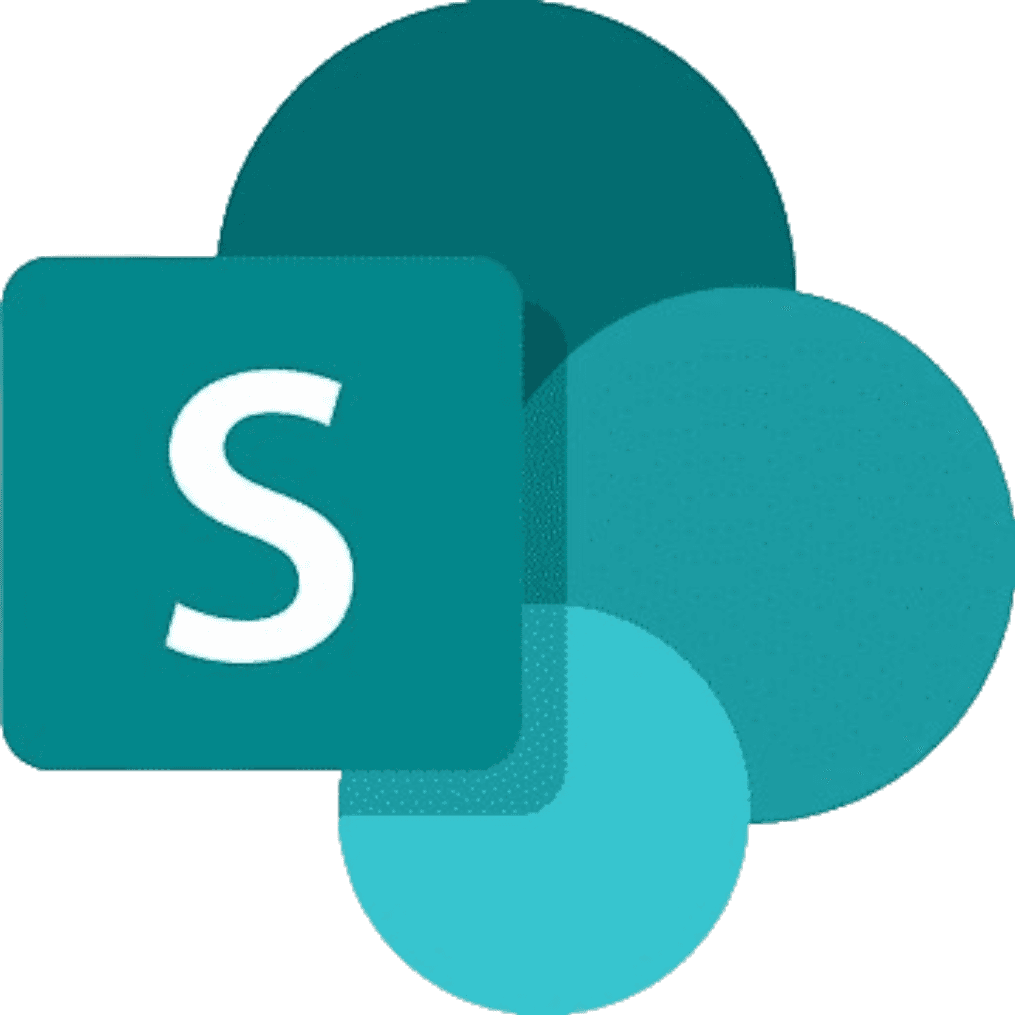What Does It Take to Build Effective AI Agents?
What Does It Take to Build Effective AI Agents?
What Does It Take to Build Effective AI Agents?
What Does It Take to Build Effective AI Agents?
What Does It Take to Build Effective AI Agents?
What Does It Take to Build Effective AI Agents?
What Does It Take to Build Effective AI Agents?
By Apratim Ghosh
By Apratim Ghosh
By Apratim Ghosh
May 30, 2025
May 30, 2025
May 30, 2025
Agentic AI
Agentic AI
Generative AI
Generative AI
Gen AI
Gen AI
Listen to this blog :
0:00/1:34
White paper
White paper
AI Based Gross to Net (G2N) Solution
AI Based Gross to Net (G2N) Solution
Valuable Asset For Agri Science Company
Valuable Asset For Agri Science Company





Agentic AI systems which can independently handle tasks, make decisions, and adapt to changing conditions have emerged from the fast advances in artificial intelligence (AI). Unlike conventional artificial intelligence models that follow set procedures, these AI agents run autonomously using advanced algorithms and real-time data to effectively accomplish difficult goals.
Agentic AI is transforming many sectors from customer service chatbots addressing complex questions to AI-powered coding assistants building and optimizing software. Companies that apply well-organized artificial intelligence agents will find improved decision-making, lower running costs, and more efficiency.
Covering fundamental components including data strategy, model design, technical scalability, best practices, and real-world use cases, this blog explores what it takes to create successful AI agents. Whether your interests are technology, corporate leadership, or artificial intelligence development, knowing these elements will enable you to fully utilize AI agents in your field of work.
What Are AI Agents?
AI agents are autonomous systems designed to manage tasks without human intervention by dynamically adjusting their workflows based on real-time data. Unlike traditional AI models, which follow fixed, rule-based approaches, agentic AI systems can self-direct their operations, make decisions, and adapt based on context.
Core Components of AI Agents
To function effectively, AI agents rely on three core components:
Autonomy: AI agents can independently analyze problems, determine solutions, and execute actions without needing constant human supervision.
Dynamic Tool Utilization: These agents can access, select, and apply tools or APIs dynamically to accomplish their objectives.
Adaptive Learning: AI agents learn from past interactions and continuously refine their responses to improve efficiency over time.
Key Pillars of Building Effective AI Agents
Building AI agents requires a structured approach that ensures efficiency, adaptability, and reliability. The following pillars play a crucial role in creating high-performing agentic AI systems:
Data Strategy
A strong data foundation is essential for AI agents to function accurately and make informed decisions.
To reduce biases and mistakes, AI algorithms need high-quality, orderly diversified data.
Adopting security and privacy policies (such as GDPR, and CCPA compliance) guarantees the moral application of artificial intelligence.
AI agents need to constantly consume and analyze fresh data if they are to remain relevant and advance across time.
Model Architecture
Choosing the right AI model is key to an agent’s efficiency and adaptability.
Selecting the Right Algorithm: Different models serve different purposes, such as:
Reinforcement Learning (RL) for decision-making AI agents.
Deep Learning (DL) for NLP-based virtual assistants.
Transformer Models (GPT, BERT) for contextual understanding and text generation.
Infrastructure and Tools: AI agents can be built using:
Machine Learning (ML) frameworks like TensorFlow, and PyTorch.
LLM-based APIs (e.g., OpenAI, Anthropic Claude).
Neural Networks to enable autonomous learning and adaptation.
Technical Stack and Scalability
Ensuring AI agents are scalable and adaptable is critical for long-term performance.
Cloud vs. On-premises Deployment
More scalable and benefiting from auto-updates and real-time processing are cloud-based artificial intelligence agents.
Greater control over compliance and data security comes from on-site deployment.
APIs and Integrations
AI agents must be able to integrate with databases, CRM systems, ERP solutions, and automation platforms to be fully functional.
MLOps for Continuous Learning
Model Monitoring: AI agents require real-time performance tracking to detect and correct errors.
Automated Model Updates: Regular updates ensure agents remain accurate and relevant.
Performance Optimization: Using real-time logging and A/B testing to fine-tune responses.
Overcoming Common Challenges
For AI agents to operate as they should, various technological, ethical, and operational issues must be resolved despite their great potential. These are some of the most often occurring difficulties and techniques to go beyond them.
Bias and Ethical Concerns: AI models can inherit biases from training data, leading to inaccurate or unfair decision-making.
Solution:
Use diverse datasets to minimize bias.
Implement AI fairness and transparency checks to monitor agent decisions.
Regularly audit AI models to ensure they align with ethical guidelines.
Computational Costs and Resource Management: Training and running AI agents require high computational power, making them expensive to deploy and maintain.
Solution:
Optimize models by using lighter architectures or distilled models for efficiency.
Leverage cloud-based solutions to scale computing power as needed.
Implement edge AI for decentralized processing, reducing dependency on cloud resources.
Explainability and Trust in AI Agents: Many artificial intelligence agents especially those driven by deep learning operate as "black boxes," making their decision-making difficult to explain.
Solution:
Use explainable AI (XAI) frameworks like SHAP and LIME to improve interpretability.
Provide transparent reasoning behind AI decisions in user-facing applications.
Design AI models that allow for human oversight and intervention when necessary.
Security and Privacy Risks: AI agents process sensitive data, making them potential targets for cyberattacks.
Solution:
Put end-to-end encryption and safe API access into use to stop illegal data leaks.
Verify adherence to GDPR, HIPAA, and CCPA among other data protection rules.
Track and safeguard exclusive AI solutions with AI model watermarking.
Best Practices and Methodologies
Organizations must follow best practices all through the development process if they want to create dependable, scalable, and efficient artificial intelligence agents. These are some fundamental approaches to guarantee AI agents operate as expected in practical contexts.
Agile Development for AI Agents
Agile approaches, which give flexibility and constant improvement top priority, help AI agents to flourish. Teams should use an iterative approach instead of strict processes so that artificial intelligence models may develop depending on real-time comments. Early identification of defects made possible by rapid prototyping lowers deployment risks. Over time, regular testing, model retraining, and incremental upgrades improve the accuracy and efficiency of artificial intelligence.
Cross-Functional Collaboration
Building effective AI agents requires expertise from multiple domains. Data engineers ensure structured data pipelines, while domain experts provide industry-specific insights. Software developers handle integration, ensuring AI functions smoothly within business operations. Collaboration across these teams results in AI agents that are not only technically sound but also aligned with real-world applications.
Testing & Validation Strategies
Rigorous testing ensures AI agents perform as expected. Unit testing validates specific model functionalities, while user acceptance testing (UAT) assesses real-world interactions. Adversarial testing helps identify vulnerabilities, strengthening AI security.
Performance Monitoring & Continuous Improvement
AI agents must be monitored consistently to maintain efficiency. Real-time dashboards track performance, detecting issues before they impact users. A/B testing compares different model versions, refining accuracy and responsiveness. Automated feedback loops further enhance AI capabilities, ensuring continuous learning and adaptation.
Conclusion
The evolution of AI agents has redefined how businesses automate tasks, make decisions, and enhance user experiences. Unlike traditional AI models that follow static workflows, agentic AI systems are designed to be autonomous, adaptable, and capable of handling complex real-world scenarios.
By leveraging high-quality data, scalable model architectures, reliable technical infrastructure, and continuous learning mechanisms, organizations can build AI agents that drive innovation and efficiency. Now is the moment to act if you want smart artificial intelligence agents included in your company operations. Our area of expertise at Inovar Tech is creating AI-driven solutions to revolutionize sectors. Connect with us to find out how artificial intelligence can transform your processes and foster invention.
Agentic AI systems which can independently handle tasks, make decisions, and adapt to changing conditions have emerged from the fast advances in artificial intelligence (AI). Unlike conventional artificial intelligence models that follow set procedures, these AI agents run autonomously using advanced algorithms and real-time data to effectively accomplish difficult goals.
Agentic AI is transforming many sectors from customer service chatbots addressing complex questions to AI-powered coding assistants building and optimizing software. Companies that apply well-organized artificial intelligence agents will find improved decision-making, lower running costs, and more efficiency.
Covering fundamental components including data strategy, model design, technical scalability, best practices, and real-world use cases, this blog explores what it takes to create successful AI agents. Whether your interests are technology, corporate leadership, or artificial intelligence development, knowing these elements will enable you to fully utilize AI agents in your field of work.
What Are AI Agents?
AI agents are autonomous systems designed to manage tasks without human intervention by dynamically adjusting their workflows based on real-time data. Unlike traditional AI models, which follow fixed, rule-based approaches, agentic AI systems can self-direct their operations, make decisions, and adapt based on context.
Core Components of AI Agents
To function effectively, AI agents rely on three core components:
Autonomy: AI agents can independently analyze problems, determine solutions, and execute actions without needing constant human supervision.
Dynamic Tool Utilization: These agents can access, select, and apply tools or APIs dynamically to accomplish their objectives.
Adaptive Learning: AI agents learn from past interactions and continuously refine their responses to improve efficiency over time.
Key Pillars of Building Effective AI Agents
Building AI agents requires a structured approach that ensures efficiency, adaptability, and reliability. The following pillars play a crucial role in creating high-performing agentic AI systems:
Data Strategy
A strong data foundation is essential for AI agents to function accurately and make informed decisions.
To reduce biases and mistakes, AI algorithms need high-quality, orderly diversified data.
Adopting security and privacy policies (such as GDPR, and CCPA compliance) guarantees the moral application of artificial intelligence.
AI agents need to constantly consume and analyze fresh data if they are to remain relevant and advance across time.
Model Architecture
Choosing the right AI model is key to an agent’s efficiency and adaptability.
Selecting the Right Algorithm: Different models serve different purposes, such as:
Reinforcement Learning (RL) for decision-making AI agents.
Deep Learning (DL) for NLP-based virtual assistants.
Transformer Models (GPT, BERT) for contextual understanding and text generation.
Infrastructure and Tools: AI agents can be built using:
Machine Learning (ML) frameworks like TensorFlow, and PyTorch.
LLM-based APIs (e.g., OpenAI, Anthropic Claude).
Neural Networks to enable autonomous learning and adaptation.
Technical Stack and Scalability
Ensuring AI agents are scalable and adaptable is critical for long-term performance.
Cloud vs. On-premises Deployment
More scalable and benefiting from auto-updates and real-time processing are cloud-based artificial intelligence agents.
Greater control over compliance and data security comes from on-site deployment.
APIs and Integrations
AI agents must be able to integrate with databases, CRM systems, ERP solutions, and automation platforms to be fully functional.
MLOps for Continuous Learning
Model Monitoring: AI agents require real-time performance tracking to detect and correct errors.
Automated Model Updates: Regular updates ensure agents remain accurate and relevant.
Performance Optimization: Using real-time logging and A/B testing to fine-tune responses.
Overcoming Common Challenges
For AI agents to operate as they should, various technological, ethical, and operational issues must be resolved despite their great potential. These are some of the most often occurring difficulties and techniques to go beyond them.
Bias and Ethical Concerns: AI models can inherit biases from training data, leading to inaccurate or unfair decision-making.
Solution:
Use diverse datasets to minimize bias.
Implement AI fairness and transparency checks to monitor agent decisions.
Regularly audit AI models to ensure they align with ethical guidelines.
Computational Costs and Resource Management: Training and running AI agents require high computational power, making them expensive to deploy and maintain.
Solution:
Optimize models by using lighter architectures or distilled models for efficiency.
Leverage cloud-based solutions to scale computing power as needed.
Implement edge AI for decentralized processing, reducing dependency on cloud resources.
Explainability and Trust in AI Agents: Many artificial intelligence agents especially those driven by deep learning operate as "black boxes," making their decision-making difficult to explain.
Solution:
Use explainable AI (XAI) frameworks like SHAP and LIME to improve interpretability.
Provide transparent reasoning behind AI decisions in user-facing applications.
Design AI models that allow for human oversight and intervention when necessary.
Security and Privacy Risks: AI agents process sensitive data, making them potential targets for cyberattacks.
Solution:
Put end-to-end encryption and safe API access into use to stop illegal data leaks.
Verify adherence to GDPR, HIPAA, and CCPA among other data protection rules.
Track and safeguard exclusive AI solutions with AI model watermarking.
Best Practices and Methodologies
Organizations must follow best practices all through the development process if they want to create dependable, scalable, and efficient artificial intelligence agents. These are some fundamental approaches to guarantee AI agents operate as expected in practical contexts.
Agile Development for AI Agents
Agile approaches, which give flexibility and constant improvement top priority, help AI agents to flourish. Teams should use an iterative approach instead of strict processes so that artificial intelligence models may develop depending on real-time comments. Early identification of defects made possible by rapid prototyping lowers deployment risks. Over time, regular testing, model retraining, and incremental upgrades improve the accuracy and efficiency of artificial intelligence.
Cross-Functional Collaboration
Building effective AI agents requires expertise from multiple domains. Data engineers ensure structured data pipelines, while domain experts provide industry-specific insights. Software developers handle integration, ensuring AI functions smoothly within business operations. Collaboration across these teams results in AI agents that are not only technically sound but also aligned with real-world applications.
Testing & Validation Strategies
Rigorous testing ensures AI agents perform as expected. Unit testing validates specific model functionalities, while user acceptance testing (UAT) assesses real-world interactions. Adversarial testing helps identify vulnerabilities, strengthening AI security.
Performance Monitoring & Continuous Improvement
AI agents must be monitored consistently to maintain efficiency. Real-time dashboards track performance, detecting issues before they impact users. A/B testing compares different model versions, refining accuracy and responsiveness. Automated feedback loops further enhance AI capabilities, ensuring continuous learning and adaptation.
Conclusion
The evolution of AI agents has redefined how businesses automate tasks, make decisions, and enhance user experiences. Unlike traditional AI models that follow static workflows, agentic AI systems are designed to be autonomous, adaptable, and capable of handling complex real-world scenarios.
By leveraging high-quality data, scalable model architectures, reliable technical infrastructure, and continuous learning mechanisms, organizations can build AI agents that drive innovation and efficiency. Now is the moment to act if you want smart artificial intelligence agents included in your company operations. Our area of expertise at Inovar Tech is creating AI-driven solutions to revolutionize sectors. Connect with us to find out how artificial intelligence can transform your processes and foster invention.
Get in Touch
Get in Touch
Related Blogs
Related Blogs
Related Blogs
Related Blogs





Join our Newsletter 👇,
Join our Newsletter 👇,
Join our Newsletter 👇,
Join our Newsletter 👇,
Want the latest technology updates & business trends in your inbox? Subscribe to our newsletter and experience reading really interesting and informative.
Want the latest technology updates & business trends in your inbox? Subscribe to our newsletter and experience reading really interesting and informative.
Your email address
Sign me up
Explore more topics
Ready to brush up on something new? We've got more to read right this way.
Explore more topics
Ready to brush up on something new? We've got more to read right this way.
Explore more topics
Ready to brush up on something new? We've got more to read right this way.
Explore more topics
Ready to brush up on something new? We've got more to read right this way.
Explore more topics
Ready to brush up on something new? We've got more to read right this way.
TECH
Inspire
Ideate
Inovate
Reach Out to Us :
Copyright © 2025 InovarTech. All rights reserved
TECH
Inspire
Ideate
Inovate
Reach Out to Us :
Copyright © 2025 InovarTech. All rights reserved
TECH
Inspire
Ideate
Inovate
Reach Out to Us :
Copyright © 2025 InovarTech. All rights reserved
TECH
Inspire
Ideate
Inovate
Reach Out to Us :
Copyright © 2025 InovarTech. All rights reserved
TECH
Inspire
Ideate
Inovate
Reach Out to Us :
Copyright © 2025 InovarTech. All rights reserved








